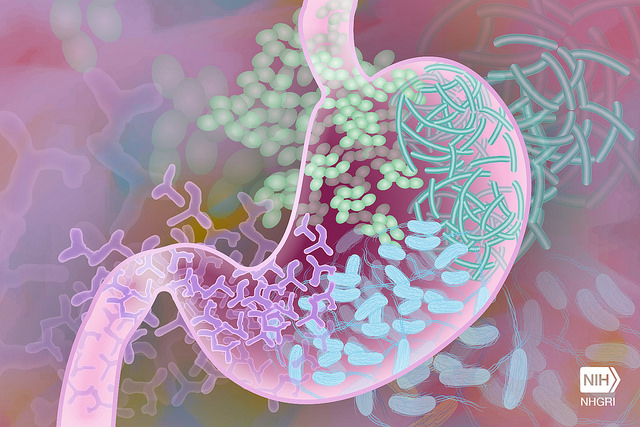
Mothers who contract bacterial infections during pregnancy are often prescribed antibiotics. It turns out that these women are unknowingly making it more difficult for their children to be treated with common antibiotics when they contract bacterial illnesses in the future. That’s according to a new study that found hundreds of antibiotic resistant genes in the gut microbiome of Danish infants.
The study, conducted by researchers at the University of Copenhagen, was published online April 14, 2021 by Cell & Host Microbe ahead of print publication. Researchers analyzed stool samples from 662 Danish one-year-old children.
“It’s a wake-up call that one-year-old children are already carrying gut bacteria that are resistant to very important types of antibiotics,” says Søren Sørensen, professor of biology, who led the study.
Public health experts have watched as the global consumption of antibiotics has increased year after year. This increase is leading to resistant bacteria becoming more widespread due to increased antibiotic consumption. “The horror scenario is that we will one day lack the antibiotics needed to treat life-threatening bacterial infections such as pneumonia or foodborne illnesses,” Sørensen says.
In 2019, a World Health Organization (WHO) study found that Access antibiotics, those used as first-line treatments, had increased in usage from 2000 to 2015 by 26 percent. The WHO also reported that second line antibiotics, used sparingly because of resistance concerns, rose 90 percent. An estimated 700,000 people die every year from antibiotic resistant bacterial infections and diseases. The WHO expects this figure to multiply greatly in the coming decades.
The goal of the Danish study was to determine the nature of antibiotic resistance in humans’ natural bacterial flora. Within the infants’ stool samples, researchers discovered 409 different genes, providing bacteria with resistance to 34 types of antibiotics. Furthermore, 167 of the 409 genes found are resistant to multiple types of antibiotics, including those classified as ‘critically important’ by the WHO for being able to treat serious diseases in the future.
Researchers also wanted to know what factors were associated with an infant having more antibiotic-resistant genes in bacteria in the gut. Both a mother having been administered antibiotics late during pregnancy or if the year-old infant had received antibiotics in the months prior to the collection of their stool samples.
“We found a very strong correlation between a mother’s antibiotic treatment during late pregnancy and of infants and gut bacteria with many resistant genes, although it appears that other influences come into play as well,” says Xuan Ji Li, the study’s lead author and a postdoctoral fellow at the University of Copenhagen.
The researchers also found a link between how well-developed the gut flora of children were and the concentration of resistant bacteria. Well-developed gut flora equated with a lesser incidence of resistant bacteria. Previous studies from the same group of children demonstrated that the development of gut flora is linked to asthma risk later in life.
The researchers say they hope the current study will help physicians better manage antibiotic treatments in pregnant women. Sørensen says: “The new knowledge may serve as a basis for more targeted methods of eliminating the types of bacteria which collect resistance genes.”













